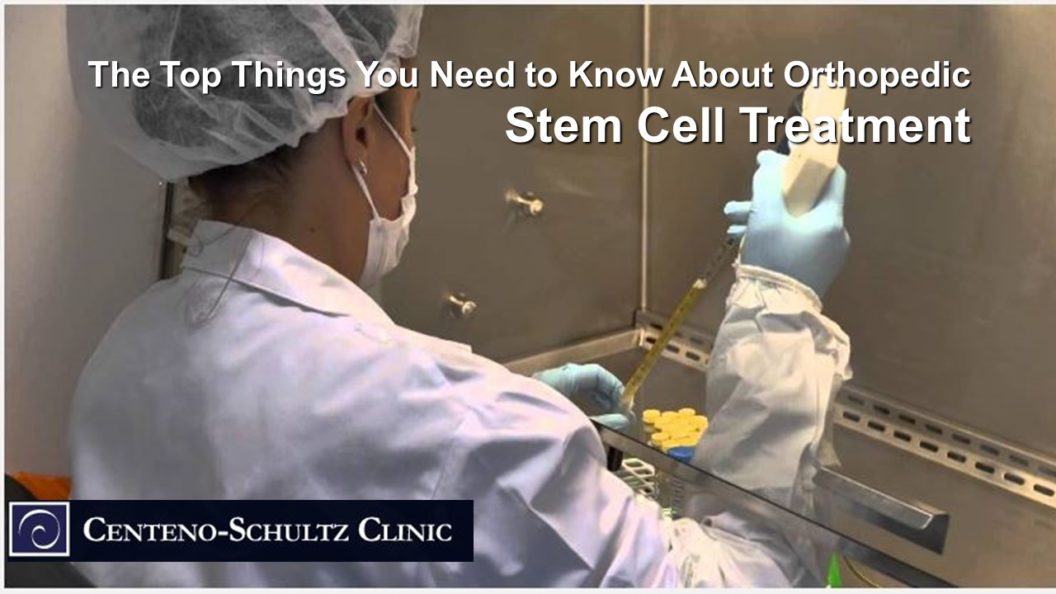With clinics popping up in every community, plugging stem cells for just about any orthopedic problem that ails you, it can be difficult for patients to determine if the stem cell treatment being offered is the real deal. The short answer is, most are not, so it’s important for you to do your homework and thoroughly vet any clinic before you consider its stem cell treatment.
Today we’re going to reveal 5 ways you can tell if an orthopedic stem cell treatment is the real deal. Be sure to watch our video below for more information:
1. The Stem Cell Treatment is Performed by a Physician
We’ll start with an easy one. If a clinic uses a physician formally trained in interventional orthopedics to perform orthopedic stem cell treatments, it’s the real deal. Many clinics out there are utilizing nonphysician personnel, such as physician assistants (PAs) and nurse practitioners (NPs), to perform what should be highly precise treatments performed only by highly skilled physicians. Find out before you even make an appointment who performs their stem cell treatments. If it isn’t a interventional orthopedics physician, move on to another clinic.
2. The Treatment Uses Your Own Bone Marrow Stem Cells
This one should be easy to determine as well. If the interventional orthopedics physician harvests your own bone marrow (a process called bone marrow aspiration, or BMA), isolates and concentrates the stem cells (creating bone marrow concentrate, or BMC), and then reinjects, under guidance, your bone marrow stem cells into your problem area, this stem cell treatment is likely the real deal. Here’s the question to ask before you make an appointment (you may even find this on their website): What is your stem cell source?
If the answer is amniotic, cord blood, or other birth tissue source, these are fake “stem cell” treatments, and the FDA regulates amniotic stem cell products only as nonliving cell products, meaning the cells are dead. There are some chiropractic clinics out there using aggressive seminars and marketing ploys to push amniotic stem cells on vulnerable potential patients, so steer clear of any clinic offering amniotic or cord-blood stem cell treatments for orthopedic conditions.
3. Thoroughly Review the Website
Does the website have its own research and pertinent publications posted? Is it filled with reference and informational content, including supporting high-level research? Does it answer your questions directly? Is it easy to find the interventional orthopedics physicians’ qualifications, background, skill levels? Is there only one clinic at the address? Can you find patient outcome data, case studies with specific information, many patients’ experiences in their own words? These are good signs, and if these things exist along with numbers 1 and 2 above, chances are the stem cell treatments provided are the real deal.
However, is the feature of website its grand stem cell seminars and where you can find them? Are there no research or publications specifically by the clinic listed? If there is external research posted to support their stem cell treatment, review it thoroughly: does it actually apply to the stem cell treatments being provided? This one can be tricky, but if the research seems off, it probably is. Do a simple Google search of the location address provided. Is it also listed as a chiropractic office, and if so, who is providing stem cell treatments? If it’s not an interventional orthopedics physician, it’s not the real deal, so drop this clinic in your trash file and move on.
4. The Stem Cell Treatment Is Performed with Guidance and in a Fully Stocked Procedure Room
If the stem cell treatment is performed using advanced and precise guidance (ultrasound and/or real-time fluoroscopy), it may be the real deal. The treatment must also be performed in a fully stocked procedure suite. This means, it should be a sterile room that houses the standard emergency equipment, such as oxygen, a crash cart, an automated defibrillator, vital signs monitor, and so on. If the stem cell treatment is done blind, or with no imaging guidance, and/or it is not performed in a sterile and stocked procedure room, the stem cell treatment is not the real deal.
5. The Stem Cell Treatment Uses Customized Dosing
If the clinic’s interventional orthopedics physician customizes the stem cell dose for each individual patient’s specific stem cell treatment (assuming numbers 1 through 4 are in place), it’s probably the real deal. This is a very precise technique requiring an onsite state-of-the-art lab and the proper technology, which a minuscule percentage of clinics actually have, as shown in the video above.
If the clinic uses an automated bedside machine (called a centrifuge) to concentrate stem cells, this is a one-size-fits-all process that can’t customize dosage to your specific condition.
Don’t go blindly into a clinic, seeking orthopedic stem cell treatment. At this point, there are probably more fake stem cell treatments out there than real ones, so do your own research, and make sure you know you’re getting the real deal.
